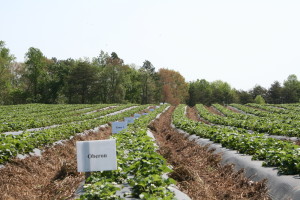Strawberry Insect Pests
go.ncsu.edu/readext?250896
en Español / em Português
El inglés es el idioma de control de esta página. En la medida en que haya algún conflicto entre la traducción al inglés y la traducción, el inglés prevalece.
Al hacer clic en el enlace de traducción se activa un servicio de traducción gratuito para convertir la página al español. Al igual que con cualquier traducción por Internet, la conversión no es sensible al contexto y puede que no traduzca el texto en su significado original. NC State Extension no garantiza la exactitud del texto traducido. Por favor, tenga en cuenta que algunas aplicaciones y/o servicios pueden no funcionar como se espera cuando se traducen.
Português
Inglês é o idioma de controle desta página. Na medida que haja algum conflito entre o texto original em Inglês e a tradução, o Inglês prevalece.
Ao clicar no link de tradução, um serviço gratuito de tradução será ativado para converter a página para o Português. Como em qualquer tradução pela internet, a conversão não é sensivel ao contexto e pode não ocorrer a tradução para o significado orginal. O serviço de Extensão da Carolina do Norte (NC State Extension) não garante a exatidão do texto traduzido. Por favor, observe que algumas funções ou serviços podem não funcionar como esperado após a tradução.
English
English is the controlling language of this page. To the extent there is any conflict between the English text and the translation, English controls.
Clicking on the translation link activates a free translation service to convert the page to Spanish. As with any Internet translation, the conversion is not context-sensitive and may not translate the text to its original meaning. NC State Extension does not guarantee the accuracy of the translated text. Please note that some applications and/or services may not function as expected when translated.
Collapse ▲Strawberries are grown on 1600 acres in North Carolina, and our crop is third in value nationally, behind only California and Florida. Several insect and mites feed on strawberries and cause damage to different parts of the plants at different times of the year.
Post transplant pests
Crickets – Feed on leaves
Cutworms – Feed on leaves and stems
Cyclamen mites – Feed in crown
Twospotted spider mites – Feed on leaves
Pre harvest pests
Aphids – Feed on leaves
Red imported fire ants – Nuisance pests in fields
Strawberry clipper – Feed on buds and flowers
Twospotted spider mites – Feed on leaves
Harvest period pests
Flower thrips – Feed on flowers and young fruit
Sap beetles – Feed on overripe fruit
Slugs and snails – Feed on leaves and fruit
Spittlebugs – Feed on leaves and stems
Spotted wing drosophila – Feed on fruit
Sugarcane beetles – Feed on roots and fruit
Tarnished plant bugs – Feed on fruit
Whiteflies – Feed on leaves
Resources
NC Strawberry Diagnostic Key
Strawberry IPM Guide – Southern Region Small Fruit Consortium
The Southern Region Small Fruit Consortium Strawberry Integrated Pest Management Guide is a regional resource for the southeastern US and is updated annually.
Insect and Disease Control of Fruits – NC Agricultural Chemicals Manual
The North Carolina Agricultural Chemicals Manual is a North Carolina specific resource for management tools.



